-
 समुद्र तट, प्रकृति का जादुई सौंदर्य, अनूठा आकर्षण सब कुछ है - पांडिचेरी यात्रा के दौरान वहाँ क्या देखें, क्या खाएं, कहां खरीदारी करें: पांडिचेरी में घूमने के 10 सर्वश्रेष्ठ स्थान (2020)
समुद्र तट, प्रकृति का जादुई सौंदर्य, अनूठा आकर्षण सब कुछ है - पांडिचेरी यात्रा के दौरान वहाँ क्या देखें, क्या खाएं, कहां खरीदारी करें: पांडिचेरी में घूमने के 10 सर्वश्रेष्ठ स्थान (2020)
-
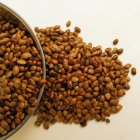 Introduce Your Family to the Multiple Benefits of Horse Gram: Check out Simple and Delicious Horse Gram Recipes and Make This Superfood a Part of Your Family's Regular Diet (2021)
Introduce Your Family to the Multiple Benefits of Horse Gram: Check out Simple and Delicious Horse Gram Recipes and Make This Superfood a Part of Your Family's Regular Diet (2021)
-
 चिया बीज का उपयोग करने के लिए शीर्ष 8 विभिन्न प्रकार के अद्भुत तरीके इसके अधिकतम लाभ प्राप्त करने के लिए। चीया बीज के बारे में आमतौर पर पूछे जाने वाले प्रश्न (2021)
चिया बीज का उपयोग करने के लिए शीर्ष 8 विभिन्न प्रकार के अद्भुत तरीके इसके अधिकतम लाभ प्राप्त करने के लिए। चीया बीज के बारे में आमतौर पर पूछे जाने वाले प्रश्न (2021)
Microgreens: A Healthy Addition to Our Diets
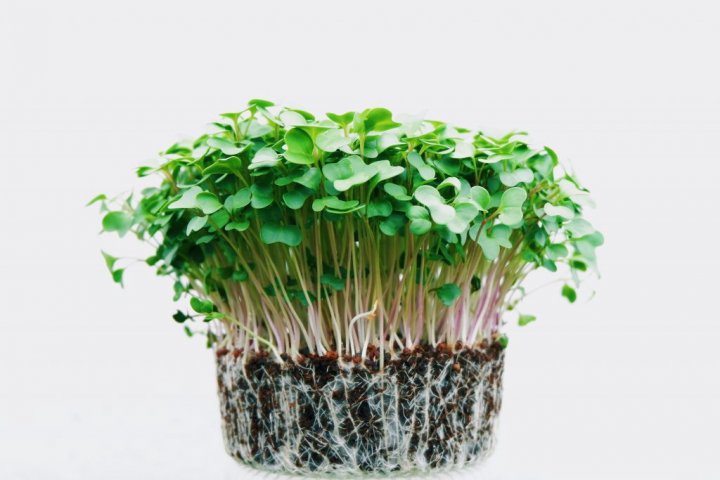
Microgreens are not new to us but there are many unknown or less known facts about it. It is a small thing that comes with larger benefits for our health.
What Are Microgreens
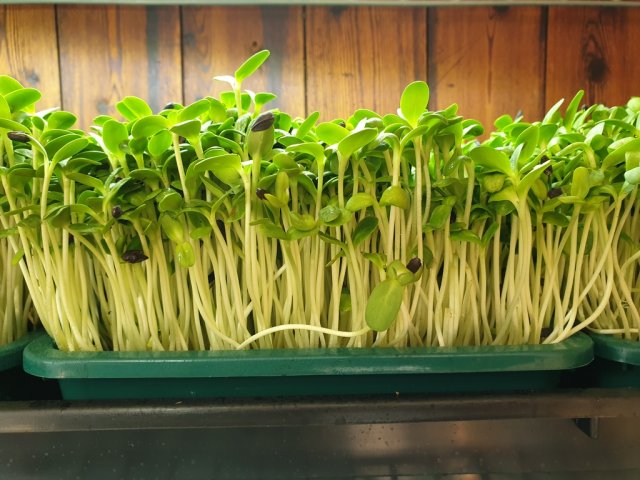
The little green seedlings which are edible vegetables are formally known as microgreens to everyone. It is quite popular nowadays seemingly available in every cafe and restaurants incorporating so many dishes adding colours and flavours. They are much smaller than regular greens and have gained enormous popularity, especially in the fine-dining circles. Microgreens are delicious with its intense, unique flavours.
Why Should You Care about Microgreens?
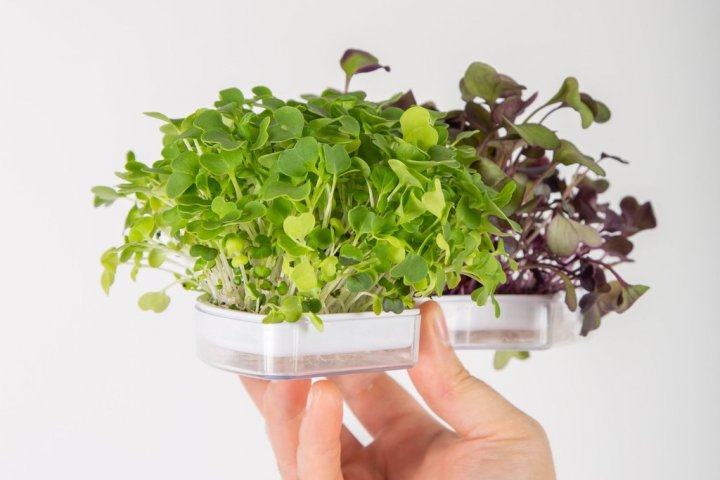
The term 'microgreen' is not specific to any one plant. Microgreens have a good nutrition value, although people do not eat large amounts yet are high in vitamins and minerals. They have a much higher content of nutrients than fully grown plants. The fully grown plants are needed to fulfil the need for fibre in your body, but microgreens fill all the other gaps in your daily dietary needs. They are ready to harvest and can be quickly grown at home. If you buy from the store, you can get a few more varieties, but they might cost you more than regular vegetables. For various beneficial purposes, you should always keep the microgreens at your fingertips to use regularly.
Different Types of Microgreens
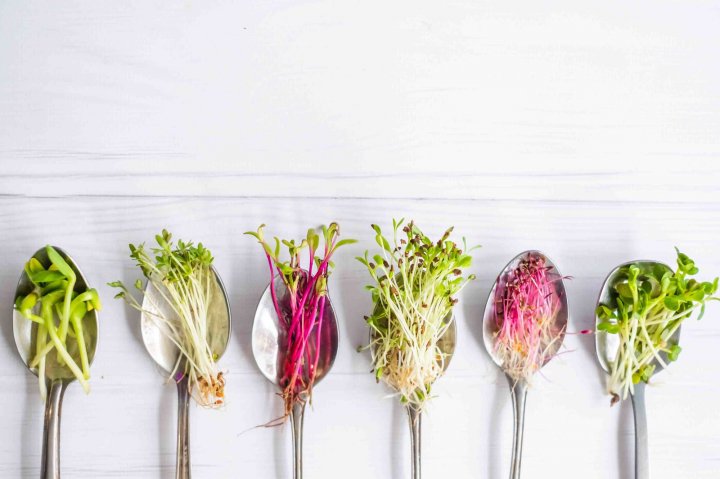
There are several kinds of microgreens available, and they are categorized according to their usefulness, taste and smell. They vary a lot, especially in terms of taste as some are sweet, some flavours sour, some are mild and bland, and few are spicy or even bitter. We can categorize microgreens in terms of the family they belong to. In most cases, they taste like a concentrated version of the full-grown plants. Some of the commonly known microgreens family are - Amaranthaceae, Amaryllidaceae, Asteraceae, Brassicaceae, Cucurbitaceae, Lamiaceae, and Poaceae family. Amaranth, beet, quinoa, garlic, beans, chickpeas, lentils, fennel etc. are a few among many microgreens we use in our daily courses. There are various flavours in microgreens, but some have a unique taste or smell. For example, radish has a spicy flavour, and they are crisp, used for garnish to add a splash of heat or colour to the salad.
Health Benefits of Microgreens

Though there isn't much research theory available, it is hard to say that microgreens can cure any disease or produce any particular health benefit. But microgreens from plants are high in healthy phytochemicals. Microgreens from Brassica species like red mustard, purple mustard, red cabbage etc. have more complex and more varieties of polyphenols than some mature plants. In a study of 25 different microgreens, it is found that red cabbage has the most Vitamin C, radish microgreens have the most Vitamin D, the two carotenoids called lutein and zeaxanthin are available in the highest concentration in the cilantro microgreens. The tiny microgreens have more iron, calcium, zinc, magnesium, and manganese than the fully grown plants.
Top Recipes to Try Using Different Microgreens
You have planted your microgreen seeds, and now when it is entirely harvested, you cannot wait to use it in different recipes. It is always exciting to feed yourself with something you have grown yourself. Microgreens can be a perfect addition to have a powerhouse of vitamins and minerals.
Microgreen Fenugreek Flatbread
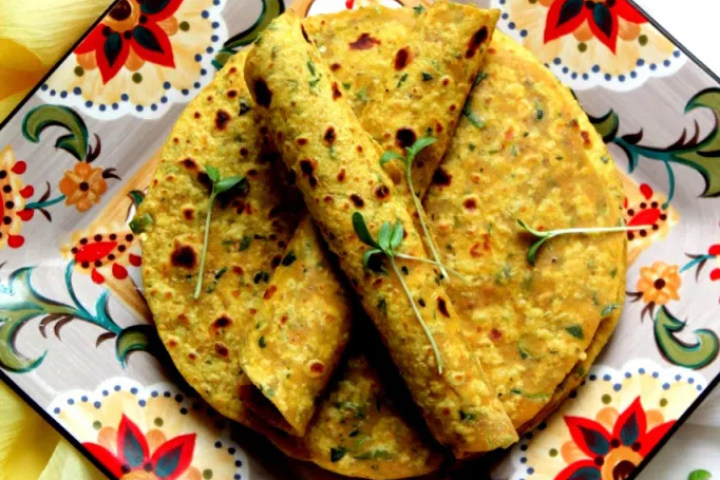
Indian bread has a wide variety of flatbread, and it is an integral part of Indian cuisine. It reflects the diversity of Indian heritage and culture. Fenugreek flatbread is also called methi thepla, a popular flatbread from Gujrat, India, and it is quite similar to the paratha. It is made with two types of flour - whole wheat and chickpea, different vegetables and some spices. Fenugreek has a bitter, spicy flavour and fenugreek microgreens have less painful and intense taste than the seeds, yet it has the smell of fenugreek.
To make a fenugreek flatbread you will need:
- Make a dough first with one 3/4th cup atta or whole wheat flour
- 1/4th cup besan or chickpea flour
- 1 cup microgreen methi or fenugreek leaves finely chopped
- 1 or 2 green chillies
- one teaspoon turmeric
- 1/4th teaspoon ajwain
- two teaspoon coriander powder
- two tablespoon oil and water to knead
- Ghee, oil and a rolling pin are some other ingredients that you need.
You can make methi thepla in three steps:
- First, you have to knead the dough by mixing all the ingredients and put it aside for a few minutes.
- Make equal separate round balls of the kneaded dough and use a rolling pin to make a 5-6 inch circle.
- Heat the Tawa or griddle, put in some oil and place the rolled thepla.
- Fry it until both sides are cooked well and serve with your favourite chutney.
Vegetarian Microgreen Puris
Yummy poori or puri is a patent recipe of India which is prevalent in almost all the states. It is a household recipe and it's made in different ways at different places.
Puris can be made with microgreens like:
- whole moong green leaves roughly chopped
- whole wheat flour 2 cups
- salt 1 tsp
- turmeric ½ tsp
- chilli flakes 1 tsp
- carom seeds or ajwain ½ tsp
- oil 2 tsp
- green chilli paste 1 tsp
To make this dish:
- Mix well all the ingredients and add 3/4th to 1 cup of water to make a stiff dough.
- Make small round balls and keep aside.
- Dust the rolling pin, use some oil and make round shapes of puri.
- Then fry them in boiling oil in medium flame until lightly brown and smell like puri.
- Please keep them in a paper napkin to soak the excess fat and serve with curry or chutney.
Wheatgrass Soup
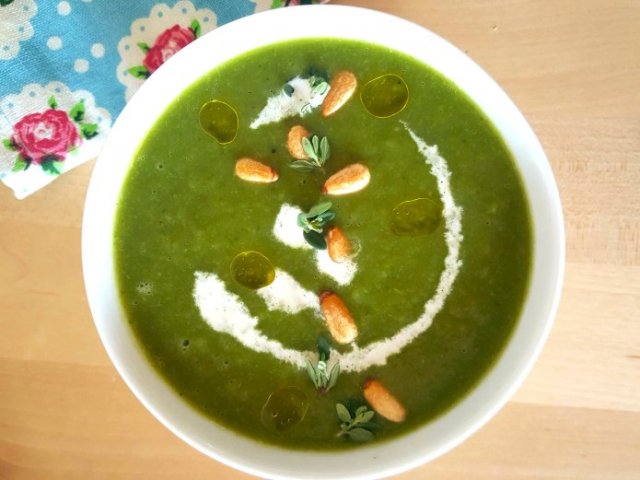
Wheatgrass is one of the most popular among several microgreens which is used in various recipes today. You can add wheatgrass in soups, dips and even salads. A soup with wheatgrass is delicious and unique for the immune system.
To make a wheatgrass soup you will need:
- 2 tablespoon wheatgrass
- two bulbs of garlic
- 4 cups vegetable stock
- two large onions
- ½ of chopped cauliflower
- two large diced onion
- one tablespoon coconut oil or avocado oil
- one handful of sage leaves
- one tablespoon pink or rock salt
- ½ teaspoon fresh ground black pepper.
To make this dish:
- You will need to roast the garlic, saute onion, cauliflower in oil and add all the ingredients.
- When done put all the ingredients in a blender with wheatgrass and make a smooth puree soup.
- You can serve right away or store in the refrigerator to use later.
Micro Pesto
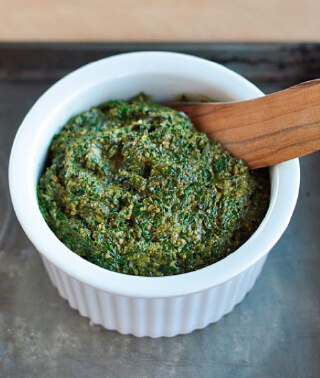
Pesto is simple to make and great to taste, and you can store it for up to a month nicely capped by olive oil in the refrigerator. It is an excellent source of antioxidants and Vitamin C, Vitamin K, and folate. Spicy mustard green pesto can be paired beautifully with roasted potato, tomato salads and sourdough bread.
To make this recipe you will need:
- ½ cup chopped pecan
- 1/4th cup pumpkin seeds
- 1/4th cup sunflower seed
- six clove crushed garlic
- two bunches of mustard greens trimmed and chopped
- ½ teaspoon salt
- 1 ½ cup extra virgin olive oil.
To make this dish:
- Make sprouts of pecan, pumpkin seeds, sunflower seeds.
- A food processor put all the sprouted or roasted seeds, garlic, with sea salt and olive oil.
- Make a smooth paste and immediately transfer into a glass mason jar, cap with the right amount of olive oil and refrigerate for a month.
Mixed Microgreen Salad
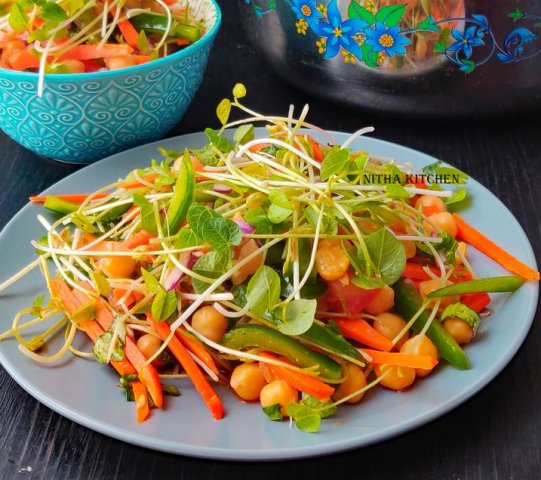
Asian microgreen salad is a vegetarian healthy and delicious salad bowl, a favourite among the salad lovers. This wholesome sprout based recipe has an authentic Asian flavour from sesame, ginger and spice mix.
To make this salad recipe, you will need:
- soak for 8 hours ahead of preparation, the dried white chana/chickpea/garbanzo beans after well-soaking wash them nicely.
- Add fresh water and cook until tender and soft.
- Keep the cooked bean aside and let it cool down.
- Meanwhile, prepare the rest of the ingredients like chopped basil and coriander leaves, grated ginger, sliced onion, tomato, capsicum and carrots into thin strips.
- In a big bowl, mix the chopped veggies, grated ginger, cooked chickpeas, mix the spices like chat masala and garam masala with rock salt or black salt and lemon juice.
- Stir well to combine the ingredients properly.
- Serve immediately or keep it in the refrigerator to use on the same day later on.
Dal with Microgreen
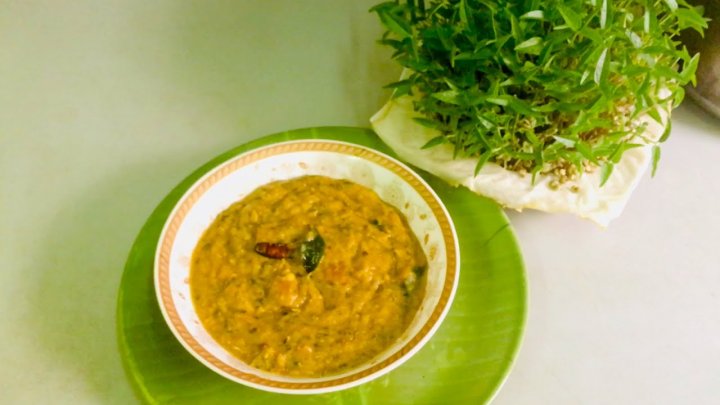
Dal is a widespread and regularly used recipe in Indian homes no matter which state you visit. It goes well with rice and chapati, two of the many patent food items that are cooked in India. If the dal is made from delicious and fresh microgreens, it becomes a daily protein intake powerhouse. Microgreen dal is a healthy recipe for any age group as it contains all the essential ingredients needed for a healthy body.
To make this dal recipe, you will need:
- Moong dal
- pumpkin
- shallots
- minced coconut
- garlic
- green chillies
- red chilli
- cumin seed
- mustard seed
- turmeric powder
- fresh curry leaves and oil.
To make this dish:
- Then Cook the moong dal in a pressure cooker and then blend shallot, garlic, chilli, cumin seed, turmeric powder, curry leaves, green chilli, coconut into a paste.
- Now add the ground paste into the dal and mix well.
- Add salt and water as required.
- Let the dal boil and then add microgreens.
- Boil for a minute and tamper with mustard seeds and cumin seed with red chilli.
- Serve with hot rice or chapati.
Pizza with Microgreen
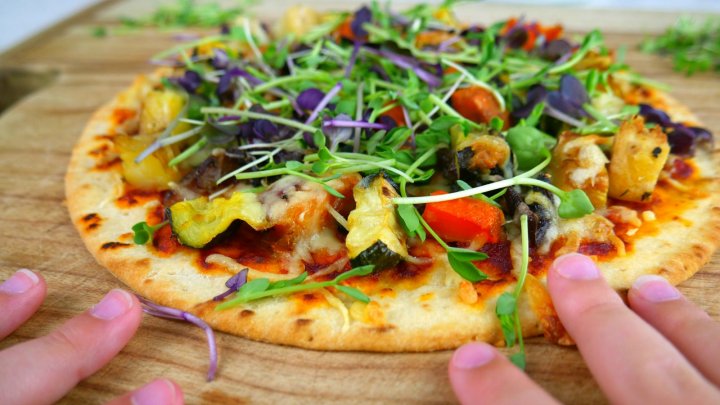
Pizza is not an Indian dish, but most Indian kids and grown-ups love to have it all the time. Though the ready-made pizzas question healthy ingredients, you can easily make a delicious healthy pizza at home with microgreens.
To make this pizza recipe, you will need:
- A pizza made with pesto, mozzarella cheese, and microgreens is healthy and tasty with the satisfaction of making it at home from scratch.
To make this dish:
- Make the dough and the pesto separately and bake it until the toppings are roasted, and the crust is cooked as golden brown.
- Try this delicious pesto microgreen pizza, and you won't be disappointed.
- This will be a sure hit at your family pizza night with personal favourite toppings.
Microgreen Omelette
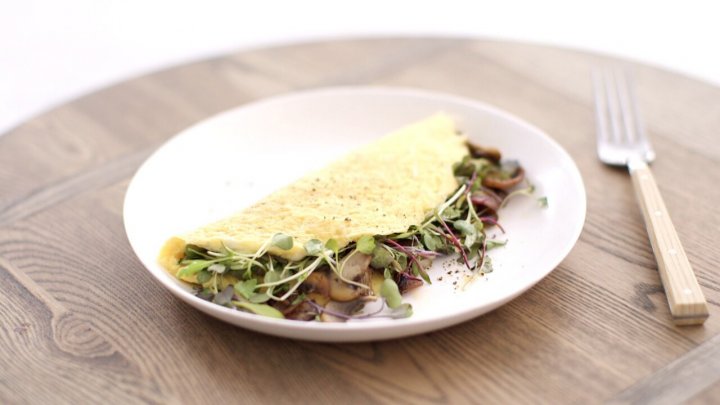
Omelette is not only a favourite dish for children, but it is also a speedy recipe to boost your protein intake. When you add microgreens to the omelette, it becomes more healthy and tasty too.
To make microgreen omelettes you can use:
- white mushroom
- nicely sliced
- unsalted butter
- coarsely ground fresh black pepper
- three large eggs, and salt.
To make this dish:
- Cook the mushroom undisturbed in butter until golden brown, mix with microgreens and set aside a bowl.
- Whisk egg seasoned with salt and pepper and put some butter to melt in the pan.
- Add the beaten egg and let it be done for 1 or 2 minutes.
- Then put the mushroom filling on one side of the omelette and gently fold the side with the filling.
- Serve hot as soon as done.
Essential Tips for Growing Microgreens
You can produce microgreens year-round, and it is readily available for its versatility. It can be a therapeutic experience to grow microgreens which can enhance your health and well-being.
Conditions to Grow Microgreens
There are specific points you need to take care of while growing microgreens. First of all, the selection is essential. You can start with some straightforward variety best for your region to produce or buy professionally mixed packs. You have to know the method of planting and the appropriate density of sowing. More densely sown seeds can result in lack of air circulation, leading to a risk of disease. Ambient temperature, humidity and circulation are also some of the vital things to grow perfect microgreens.
How to Grow Microgreen at Home

Microgreens can be expensive and difficult to find in everyday life. But if you have less space, then it is the most convenient way to add some green to your house and get the best of rich vitamins and plant protein sources. You can grow microgreens indoor by using suitable trays, moisturized soil or potting mix and maximum needed light. You can get your seedlings in between seven to fourteen days for most of the varieties of microgreens.
Risks of Microgreen Intake
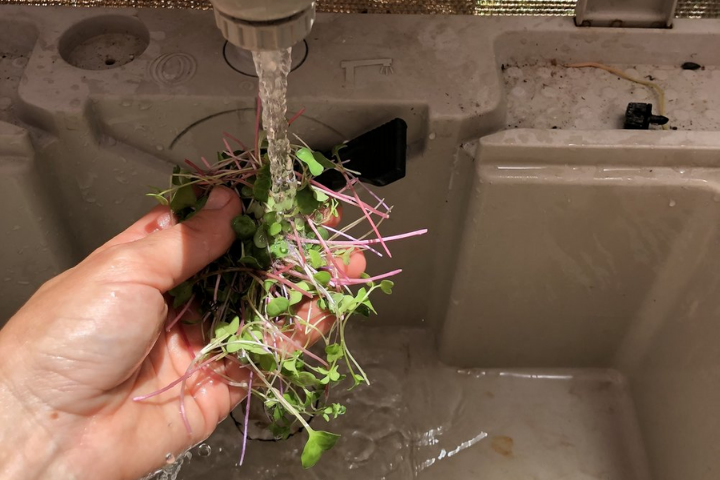
Microgreens are delicious and functional herbs. But as they are grown mostly under the soil in poor ventilation and low light conditions or a damp environment, they might have fungus and bacteria growth issues. So it would help if you were a little careful about the air circulation and cleanliness before eating your microgreens.
-
 Introduce Your Family to the Multiple Benefits of Horse Gram: Check out Simple and Delicious Horse Gram Recipes and Make This Superfood a Part of Your Family's Regular Diet (2021)
Introduce Your Family to the Multiple Benefits of Horse Gram: Check out Simple and Delicious Horse Gram Recipes and Make This Superfood a Part of Your Family's Regular Diet (2021)
-
 Beauty is Hardly Skin Deep and You Must Follow the Right Diet for Glowing Skin. Try these Healthy Home Remedies and Diet Tips for Glowing Skin in 2020
Beauty is Hardly Skin Deep and You Must Follow the Right Diet for Glowing Skin. Try these Healthy Home Remedies and Diet Tips for Glowing Skin in 2020
-
 Mumbai Famous Food: 10 Dishes that Define Mumbai's Lip-smacking Food Culture, Plus Best Places to Try Them!
Mumbai Famous Food: 10 Dishes that Define Mumbai's Lip-smacking Food Culture, Plus Best Places to Try Them!
-
 Make Microgreens a Part of Your Family's Diet in 2021! These 7 Nutritious and Delightful Microgreens Recipes Can Be Ready in a Jiffy!
Make Microgreens a Part of Your Family's Diet in 2021! These 7 Nutritious and Delightful Microgreens Recipes Can Be Ready in a Jiffy!
-
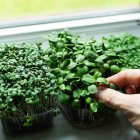 Homegrown Microgreens are a Great Way to Boost Your Family's Health: Learn How to Grow Microgreens at Home, Their Benefits, Plus Delicious and Nutritious Microgreen Recipes to Try Out (2021)
Homegrown Microgreens are a Great Way to Boost Your Family's Health: Learn How to Grow Microgreens at Home, Their Benefits, Plus Delicious and Nutritious Microgreen Recipes to Try Out (2021)
Brighten Up Your Lunch and Load with a Wide Range of Nutrients at The Same Time!
Microgreens are a beautiful and healthy food that steadily shifts from obscure culinary circles to popular dining dishes. A regular serving of micro-greens will prolong your life, micro-greens are considered to have 4-6 times more nutritious than older leaves of the same plant. Microgreens are small, edible, unripe seeds that are amazingly nutritious and stunningly beautiful to look at. Our collection of the above listed 8 recipes are the easiest recipes for microgreens and are both nutritious and tasty. We hope this article helped you to learn some easy, tasty and flavourful notorious microgreen recipes.


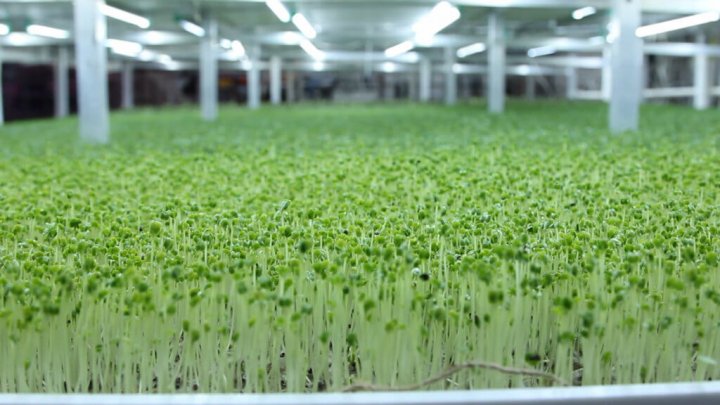
 Highlight the Best Facets of Your Incomparable Beauty: Discover the Best Face Highlighter Currently Available in India and Everything You Need to Know About Using Face Highlighters for Maximum Effect (2023)
Highlight the Best Facets of Your Incomparable Beauty: Discover the Best Face Highlighter Currently Available in India and Everything You Need to Know About Using Face Highlighters for Maximum Effect (2023)
 Forget the Blemishes and Get that Picture Perfect Flawless Radiance on Your Face: Check out the Best Foundations for Oily Skin Currently Available in India and Everything You Need to Know About Makeup Foundations (2023)
Forget the Blemishes and Get that Picture Perfect Flawless Radiance on Your Face: Check out the Best Foundations for Oily Skin Currently Available in India and Everything You Need to Know About Makeup Foundations (2023)
 Make Your Presence Felt Wherever You Go: Discover the Best Perfumes Under 2000 for Both Men and Women to Announce Your Arrival and Make Any Occasion Memorable (2023)
Make Your Presence Felt Wherever You Go: Discover the Best Perfumes Under 2000 for Both Men and Women to Announce Your Arrival and Make Any Occasion Memorable (2023)
 Protect Your Oily Skin from the Harmful Rays of the Sun: Discover the Best Gel Based Sunscreens for Oily Skin and Everything You Need to Know Before Buying One (2023)
Protect Your Oily Skin from the Harmful Rays of the Sun: Discover the Best Gel Based Sunscreens for Oily Skin and Everything You Need to Know Before Buying One (2023)
 Minor Blemishes and Wrinkles Affecting Your Confidence? Check out the Best BB Creams to Conceal Your Worries and Nourish Your Skin to Restore the Healthy, Radiant and Glowing Complexion Back Again (2023)
Minor Blemishes and Wrinkles Affecting Your Confidence? Check out the Best BB Creams to Conceal Your Worries and Nourish Your Skin to Restore the Healthy, Radiant and Glowing Complexion Back Again (2023)
